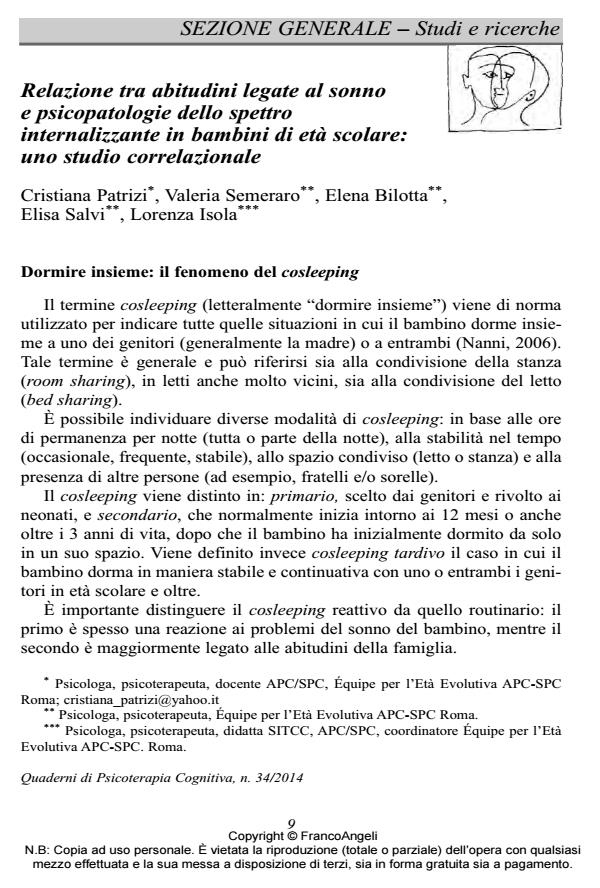The relationship between sleep habits and internalizing disorders among school-aged children: A correlational study
Journal title QUADERNI DI PSICOTERAPIA COGNITIVA
Author/s Cristiana Patrizi, Valeria Semeraro, Elena Bilotta, Elisa Salvi, Lorenza Isola
Publishing Year 2014 Issue 2014/34
Language Italian Pages 15 P. 9-23 File size 130 KB
DOI 10.3280/QPC2014-034002
DOI is like a bar code for intellectual property: to have more infomation
click here
Below, you can see the article first page
If you want to buy this article in PDF format, you can do it, following the instructions to buy download credits

FrancoAngeli is member of Publishers International Linking Association, Inc (PILA), a not-for-profit association which run the CrossRef service enabling links to and from online scholarly content.
There is no evidence about an effect of sleep habits on internalizing psychopathology. However, it is advisable for a therapist to investigate patients’ sleep habits during a routine assessment. Habits like Cosleeping and Bed-sharing, belonging to the main framework of parenting styles, need to be further analyzed starting from the history of the family, in order to understand if they correspond to a life choice, to a coping strategy to a stressful event, or to family/individual problems. A study has been conducted on two different samples: a "clinical" sample consisting of patients (age range: 8-14 years) of the Neuropsychiatry Clinic of Sapienza, University of Rome, and a control sample, recruited some schools (in Rome and in Calabria). The main aim of the study is to understand if sleep habits are correlated to sleep disorders, and to anxious/depressive states of the parents and/or of the son. Furthermore, we wanted to investigate if sleep problems are correlated to a weaker autonomy of the child, measured through separation anxiety levels and through behaviors like avoiding sleeping apart from their parents.
Keywords: Cosleeping, sleep disorders, internalizing disorders, developmental psychopathology
Cristiana Patrizi, Valeria Semeraro, Elena Bilotta, Elisa Salvi, Lorenza Isola, Relazione tra abitudini legate al sonno e psicopatologie dello spettro internalizzante in bambini di età scolare: uno studio correlazionale in "QUADERNI DI PSICOTERAPIA COGNITIVA" 34/2014, pp 9-23, DOI: 10.3280/QPC2014-034002